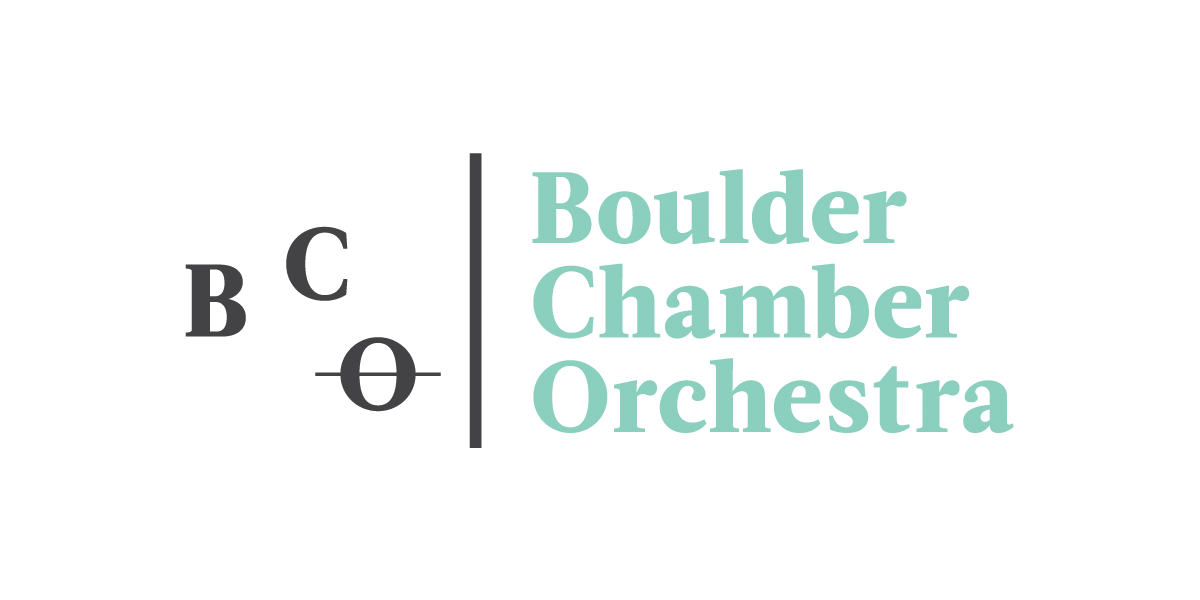Holiday Celebration with Beethoven
December 16, 2023, 7:30 PM
Boulder Adventist Church
Mozart: Overture to Marriage of Figaro
(Special guest conductor: Nadia Artman)
Beethoven: Concerto for Piano and Orchestra No. 2, in b-flat, Op. 19
Adam Zukiewicz: Piano
Intermission
(please join us for some holiday treats at fellowship hall)
Sylvie Bodorova: Concerto for Flute and Orchestra (World premier)
Cobus DuToit: Flute
Maxime Goulet: Chocolats Symphoniques
Program Notes
W. A. Mozart (1756 - 1791) Overture to Marriage of Figaro, K. 492
In 1781, Mozart set out for Vienna, capital of the Holy Roman Empire and the center of Central European culture, as a freelance musician—a novelty at the time. In spite of early success, especially with his piano concertos and as a pianist, he could never secure a position in court and his financial situation went from bad to worse. Opera was the most prestigious musical genre in Vienna and Mozart had the luck to team up with one of the best librettists of all time, Lorenzo da Ponte (1749-1838). Born in Italy of Jewish parents and converted as a child to Catholicism, da Ponte wrote the librettos for three of Mozart’s greatest operas: Don Giovanni, The Marriage of Figaro, and Cosi fan tutte. Unfortunately, the three da Ponte operas met only with limited success in Vienna. It was only after Mozart’s death that their true value was appreciated. The Marriage of Figaro is one of the oldest operas in the standard repertoire and one of the most youthful in spirit. When Pierre de Beaumarchais’ play, on which the opera is based, was published in 1782, its unflattering portrait of the aristocracy understandably caused an uproar and horrified Louis XVI. Like any scandal, it proved irresistible and must have spread rapidly, because Mozart’s opera to Lorenzo da Ponte’s libretto was premiered only four years later on the cusp of the French Revolution.
Beethoven: Piano Concerto No. 2 in b-flat Op. 19
Anyone writing a piano concerto in Vienna in the 1790s did so in the shadow of Mozart. Beethoven had met him on a 1787 trip to Vienna and may even have taken some piano lessons from him at that time. Beethoven knew some of Mozart’s concertos intimately, and in the B-flat Concerto he employs an orchestra of conservative mid-Classical dimensions, identical to that required in several of Mozart’s late piano concertos. In general structure he also sticks to a Mozartian norm: three movements, of which the first is a sonata form with an orchestral exposition, the second a lyrical slow movement, and the third a rondo. In addition, the texture is truly orchestral. Where many other composers of the day favored the sort of writing in which the virtuoso was given sparkling material against a subservient background of accompanying instruments, Beethoven followed the Mozartian ideal of a more integrated texture in which the piano plays the role of first among equals.
In the Op. 19 concerto we find the fingerprints of a distinct talent. In the opening Allegro con brio the listener is struck by the rapid alternation of themes with starkly contrasting personalities, a chiaroscuro abetted by equally clear juxtapositions of dynamics. Although Beethoven does not engage here in the sort of harmonic questing that would soon mark his innovative musical architecture, he does reveal that such things already interest him through his unusually frequent references to the minor mode and, especially, the passage in the unanticipated key of D-flat major that surfaces not far into the orchestral exposition.
For his slow movement, Beethoven offers a lyrical, rather solemn melody that becomes increasingly embroidered as the movement progresses. This would surely have provided him with an opportunity to show off his skill as an improviser. It seems unlikely that he would have constrained himself literally to the score as we have it, especially since he hadn’t gotten around to writing it down by the time of the premiere. In fact, he probably didn’t set much of the concerto down on the page for another six years after the first performance. Writing on April 22, 1801, to the concerto’s eventual publisher, the composer said, “As is usual with me, the pianoforte part in the concerto was not written out in the score, and only now have I done so, hence, because of the haste you will receive that part in my own illegible manuscript.” Still, if the details may originally have departed from what was published, the general contours were firmly in place, including the surprising simplicity of the soloist’s unharmonized melody in the closing pages of this movement. This would seem a supremely Mozartian touch, except that Mozart never did it quite the way Beethoven does here, preparing the listener for a cadenza (an improvisatory solo passage) by building up to a classic cadence and then foiling expectations by delivering scaled-down simplicity instead of technical intricacy.
Ironically, the last movement, the rollicking Rondo that Beethoven seems to have tossed off just days before the premiere, is the movement that remains most memorable. Both of the preceding movements are beautifully composed and filled with interesting ideas and imaginative working-out. But the Rondo theme, an infectious little tune in compound time, is blessed with Scotch-snappish, “short-fast” rhythms that have a way of sticking in the ear. The Rondo refrain appears four times in the course of the movement, and the interludes provide delightful contrast, including a foray in the direction of what late-eighteenth-century listeners would have taken to be “Gypsy” music.
—Notes by James M. Keller
Sylvie Bodorová (born 31 December 1954)
Sylvie Bodorová is a Czech composer. During a career spanning from the late 1970s to the present day she has composed a large number of works for various instruments, both solo and orchestral pieces, and produced commissions for cities, festivals and organisations around the world. She was a founder (and only surviving) member of the Czech classical group Quattro, formed in 1996.
Bodorová studied composition at the Janáček Academy of Music and Performing Arts (JAMU) in Brno and later as a post-graduate at the Music and Dance Faculty of the Academy of Performing Arts in Prague. She continued her studies in Gdańsk and the Accademia Musicale Chigiana in Siena (with Professor Franco Donatoni) and from 1987 she attended Professor Ton de Leeuw's composition courses in Amsterdam. In 1993 she had made her first visit to the United States for a week-long residency in the School of Fine Arts at Miami University, Ohio. The music library at the University of Cincinnati contains several of Bodorová's published scores, as well as copies of manuscript scores of her works.
Bodorová's works have been performed on every continent, including the Antarctic, where there was a performance of her "Homage to Columbus" for guitar in 1997. She has received several competition prizes (Mannheim, Czech Radio Prague) and several commissions from the Warwick Festival: Megiddo - Piano Trio - 2001, for the same festival -Terezin Ghetto Requiem - Škampa Quartet - 1998, "Ama me" for baritone and piano - 1999 and Vertumnus - Brass Quintet in 2005.
In 1999 she also wrote compositions for Buenos Aires – Concierto de Estío for Guitar and Orchestra – and for Bochum in Germany – Saturnalia for Orchestra. After the success of Terezín Ghetto Requiem, the Prague Spring International Music Festival commissioned the oratorio Juda Maccabeus for a performance in St. Vitus Cathedral (with Gabriela Beňačková, Aleš Briscein [cs], Ivan Kusnjer and the Prague Philharmonic Choir) in May 2002 and then at the Litomyšl International Festival in June 2002. Concerto dei fiori for Violin and Strings was premiered at the Prague Spring Festival 1997, then performed in the United States in 1998 and the PONTES Festival in Prague.
Terezin Ghetto Requiem for Baritone and String Quartet was performed at the Warwick and Leamington Festival in July 1998, Wigmore Hall in London in October 1998, again in Warwick in July 1999, other festivals in UK, in Berlin (November 1999), in Halle (Saale), Terezín, at the Prague Spring Festival 2000, Coventry and Huddersfield (November 2000). In 2003 Bodorová finished a commission by the Tucson Winter Chamber Music Festival – a composition for Harp and Strings Mysterium druidum. She composed Rotationes for clarinet, violin, viola and cello for the same festival in 2012.
She finished the commission for Camerata Bern (Bern Concerto, Silberwolke) – Concerto for Violin, Viola and Strings, which was performed in Bern and Germany in August and September 2005. She wrote the piano concerto Come d'accordo for Prague Philharmonia and pianist Martin Kasík, premiered in February 2006, the song cycle Slovak Songs for Štefan Margita and Gabriela Beňačková – the cycle was recorded in 2006 – and Amor tenet omnia – a cycle of choruses on the texts from Carmina Burana premiered in Luxembourg and France in August 2007.
The oratorio Moses was commissioned by the International Litomyšl Smetana Festival and premiered in 2008. In 2009 she wrote Carmina lucemburgiana for strings. It was commissioned by the Government of the Grand Duchy of Luxembourg and its embassy in Prague. In May 2012 Bodorová finished Lingua angelorum – a song cycle for baritone and large symphony orchestra inspired by Rudolf II. The composition was commissioned by and was dedicated to Thomas Hampson. She wrote the orchestral version of Dvořák's Gypsy Melodies, Op. 55, for Thomas Hampson and Wiener Virtuosen, which premiered at the Musikverein in Vienna in February 2013.
Bodorová was a member of Quattro, a group of Czech composers formed in 1996, also featuring Otmar Mácha (1922–2006), Luboš Fišer (1935–1999) and Zdeněk Lukáš (1928–2007). She is also involved in the restoration of Gustav Mahler's birthplace in Kaliště near Humpolec in the Czech Republic. She has also composed and arranged many compositions for children. Her music often features references to Johann Sebastian Bach's music (such as a quotation of his choral "Schmücke dich o liebe Seele" at the end of Concerto dei fiori and transcriptions of Preludium C moll from Wohl Temperiertes Klavier, Toccata D minor), and to Roma and Eastern European rhythms (her ancestors are from Hungary).
Concerto for Flute and Orchestra notes by Composer
I have always found the flute to be a slightly transcendental instrument in its color, appearance, and technique, as well as in its station among other wind instruments. The first movement of my piece Concerto di Transflautato for Flute and Orchestra is titled "Transcantato," and to me, this movement represents quietude—a sketch with crystalline fragility alternating with a sort of cantilena that only the flute is able to convey. The second movement, "Transdanzato," brings together a clash of various eras of stylized dance music, from the Renaissance through the Contemporary, in a rhythmically and metrically diversified musical fabric. With its vigor and brazenness supported in great measure by the orchestra, the third and final section of the piece titled "Transmutato" rushes forward without restraint like a swollen river. Struggle alternates with moments of drunken victory, only to be once again submitted to harsh trials. After many twists and turns, the flute's technical mastery emerges victorious.
Tonight’s Concerto for Flute and Orchestra was commissioned by the Boulder Chamber Orchestra and kindly gifted by the composer after a culmination of earlier collaborations between Mrs. Bodorová and Music Director Bahman Saless.
Maxime Goulet: Chocolats Symphoniques
Symphonic Chocolates is the perfect soundtrack for a chocolate tasting: an orchestral suite in four short movements in which each movement evokes a different flavour of chocolate. Experience Symphonic Chocolates in a tasting concert with a live orchestra and at home with the box of chocolate disc. Savour four small chocolates while each music of the corresponding flavour is being played. The movements are as follows:
Caramel Chocolate : A long lyrical melody supported by a rich and enveloping sonority.
Dark Chocolate : An intense habanera of desire and seduction, spiced up with a dissonant bitterness.
Mint Chocolate : A delicate freshness with icy cold sonorities.
Coffee-infused Chocolate : An espresso tempo with a Brazilian flavour.
Enjoy! Happy Holidays!
Total duration of the piece: 11 minutes








